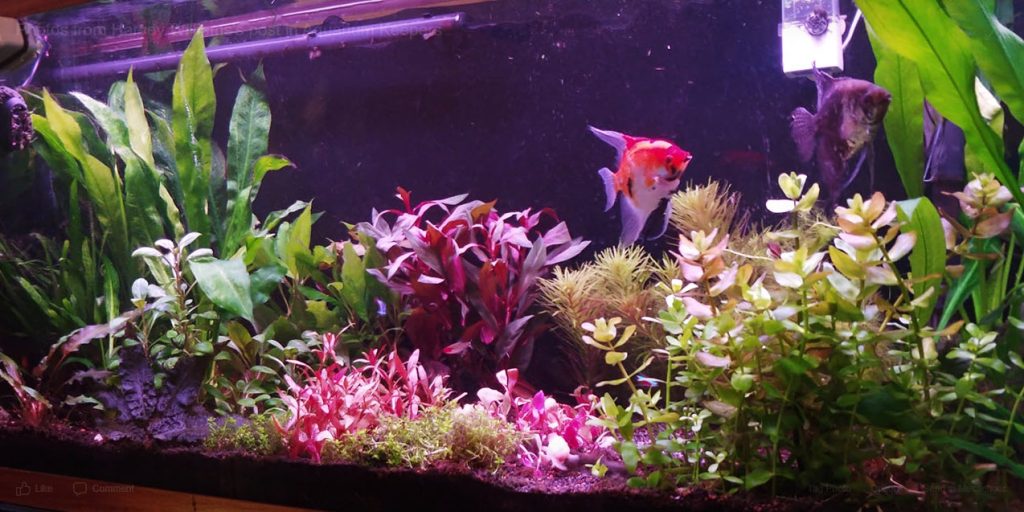
Terminology
The “brown gunk” found in aquarium filters is all a type of aggregate called a “biofilm”; a matrix or gel of polysaccharides and proteins with bacteria, protozoans, fungi and water molds. For purposes of this article the thin outer surface of the “brown gunk” we will call a “biofilm”. The interior of the “brown gunk” has a different bacterial population than the “biofilm” and we will simply call it “brown gunk”.
Myths
There are two main myths we need to expose here.
- The first myth is that virtually all the beneficial bacteria in a filter media are tightly bound on the media’s surface, not on the brown gunk on the media and in between the media.
- A similar myth, pushed by some filter media suppliers like Seachem Matrix and BioHome, is that most of the bacteria live inside “porous” media.
Exactly the opposite is the truth in both cases. The surface of the “brown gunk” both on and between the media will have most of the beneficial bacteria, the outer surface of the media will have moderate amounts of beneficial bacteria and there will be NO beneficial bacteria INSIDE a media such as ceramic rings, lava rock, Biohome or Matrix.
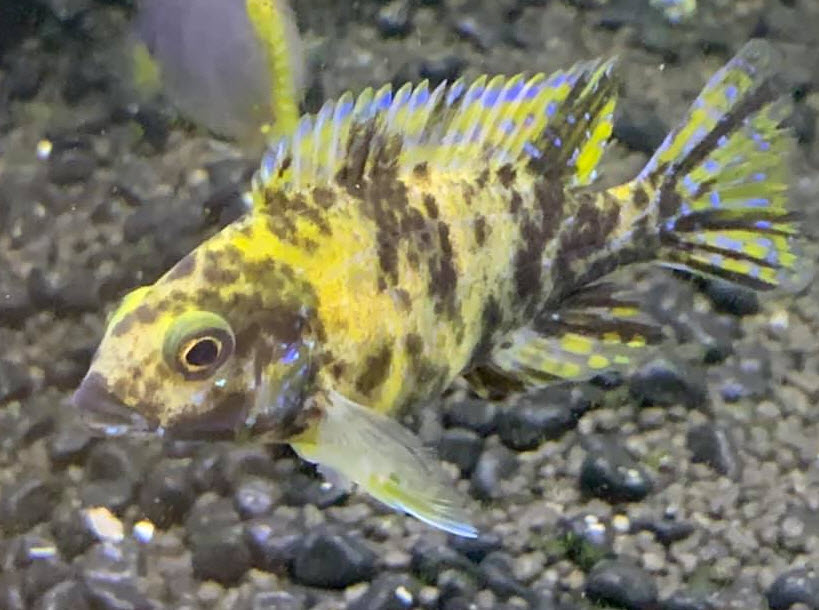
“Brown Gunk”
All aquariums get “brown gunk” somewhere in them. Note a thin layer of “brown gunk” can be colorless. Other words used to describe this material is biofilm, “poo”, sludge, mud, waste, “yuck”, debris, detritus, mulm and “organic matter”.
“Brown gunk” is much more complex than many people realize. The many types of bacteria and organisms which are incorporated in “brown gunk” produce a very ordered structure with layers and channels that are very efficient at detoxifying and removing ammonia from the water. This structure also efficiently removes something called “dissolved organic compounds” or DOCs. This structure is largely alive, not dead.
These tiny open channels in the brown gunk insure that oxygen permeates very thick layers of brown gunk (like FEET of layers) via Brownian movement and diffusion. So even very thick deposits of brown gunk in something like a canister filter that hasn’t been cleaned in years typically will NOT go hypoxic. Hypoxic conditions give themselves away by smelling bad, very bad. And I’ve seen many filters where the brown gunk build-up is huge and there is no foul odor. But note that one reader who was obviously overfeeding had a canister go hypoxic after only six weeks of operation, so it can happen.
This brown gunk is epitomized by the brown gel found inside of fluidized bed media (Kaldnes of “K1”) after several months of operation. It is a thin filmy translucent brown gel.
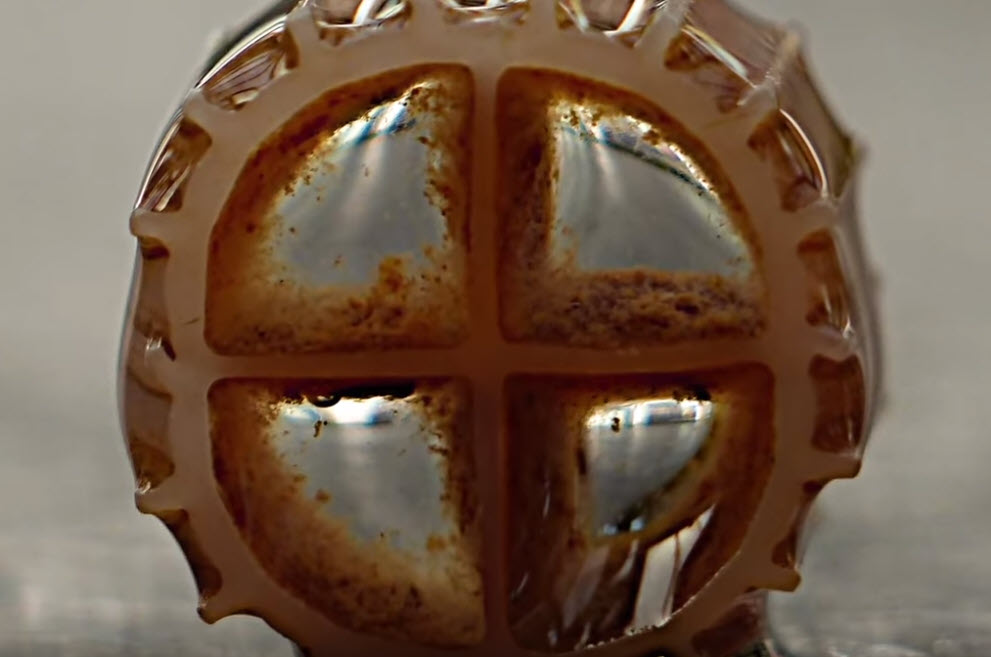
Brown gunk is found in the pores of very open filter media like urethane foam and on the surfaces of filter media like ceramic rings. Brown gunk is NOT found inside ceramic media or media like Matrix. Brown gunk can also be found free floating in some systems where there is a low flow where it is called mulm. Brown gunk magnified looks like this:
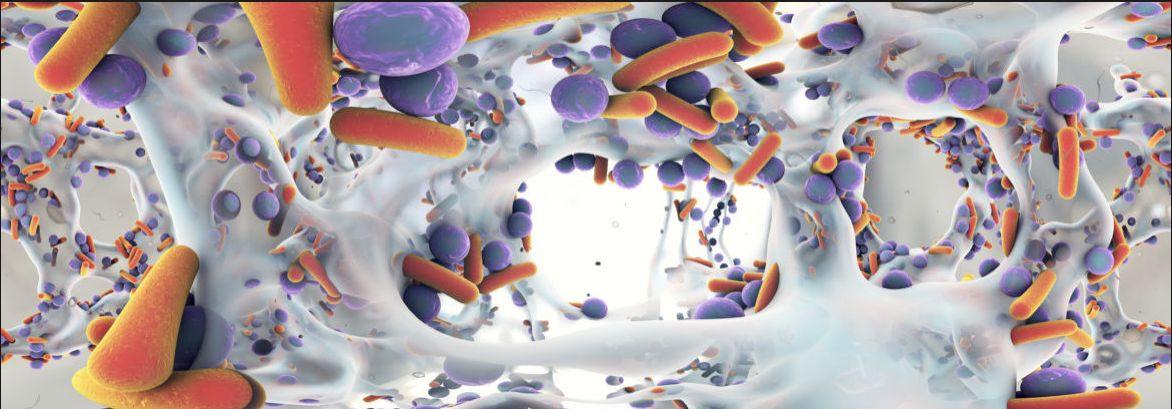
This structure is very similar to urethane foam, very porous and easily penetrated by water. It is, of course, on a much smaller scale than urethane foam. The orange and purple bodies are beneficial bacteria (both heterotrophic and autotrophic) and the walls are mucus put out by these organisms.
Below is an electron microscope view of the brown gunk on a piece of gravel that was used in an under-gravel filter.

And here is another electron microscope photo:

Science of Brown Gunk and Biofilm
The science of brown gunk is quite complex. Technically biofilms don’t only form on the surface of the media in a filter. They form in the voids in the media and create jelly-like mucous balls of brown gunk. If the flow through the media voids is too fast the brown gunk won’t form. If the flow is too slow the various organic compounds and ammonia the beneficial bacteria are consuming won’t get to the bacteria and be removed properly. So it actually becomes quite difficult to predict the performance of media in a filter, especially with very high fish stocking.
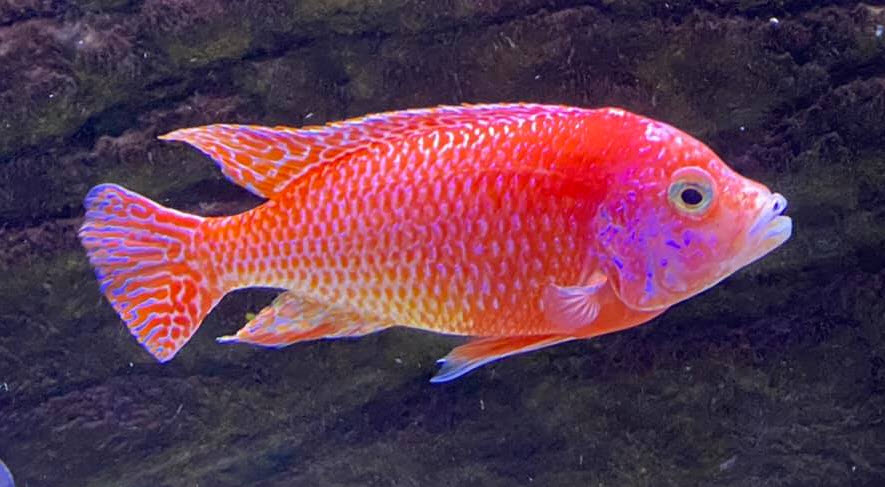
There is another concept related to “brown gunk”, something called a “biofilm”. A scientist will consider all of “brown gunk” to be a “biofilm”. As mentioned above, we will consider only the thin out surface of the “brown gunk” to be a “biofilm”. This is because the thin outer layer has a different bacterial population than the inner layers.
The beneficial nitrifying bacteria in the “brown gunk” are located on the surface of the “brown gunk” in the thin but convoluted biofilm with a different bacterial composition than the body of the “brown gunk”. In an established filter media most of the ammonia oxidation is done in a thin “biofilm” which is on top of a “brown gunk”.
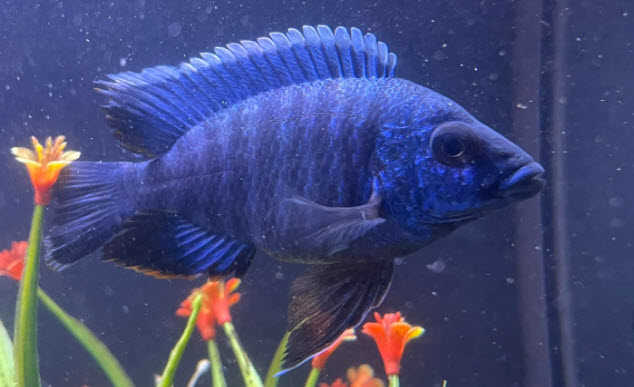
A “biofilm” found in fast currents or where nutrients are sparse is only 100 to 200 microns (0.004 to 0.008 inches, the thickness of a human hair) thick. And there is no “brown gunk” in such high flow areas. This biofilm can be very tenacious and virtually impossible to remove. This same thin tenacious hard biofilm will also be very slowly produced in areas of low flow, underneath a softer convoluted biofilm.
If one has a huge amount of biofiltration one can have an invisible thin biofilm on all the surfaces. Ben Ochart has a heavily stocked aquarium with both a large sump and a foam filled FX6 on the aquarium. He took the FX6 apart after six months of operation and the foam was “clean as a whistle”. But I guarantee there was actually a very thin invisible and highly effective biofilm on all the urethane surfaces in the foam.
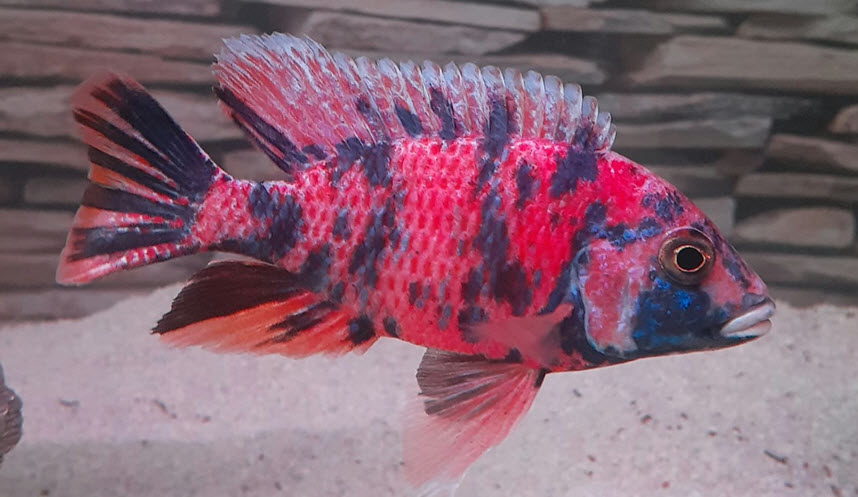
In addition there will be a softer brown gunk which will form in areas of lower flow . This soft brown gunk (which technically is also a biofilm) will have a biofilm with a different composition on its surface.
A good example of the two types of biofilms are the two biofilms that form on a person’s teeth.
- A soft thick grainy biofilm is what appears on your teeth if you don’t brush them for a few days. It can rapidly form. It is rough, thick and grainy. It can be easily removed with a toothbrush.
- A thin, smooth and hard biofilm will form on your teeth over a span of months. This needs to be scraped off with steel implements and ultrasonic chisels by a dental hygienist.
The same thing happens with all filter media. A soft thick biofilm will rapidly form in weeks and a hard thin biofilm will take many months to form. The thin biofilm typically forms under a soft biofilm, much like what happens on one’s teeth. BOTH forms of biofilm are perfectly capable of oxidizing ammonia and absorbing dissolved organic compounds.
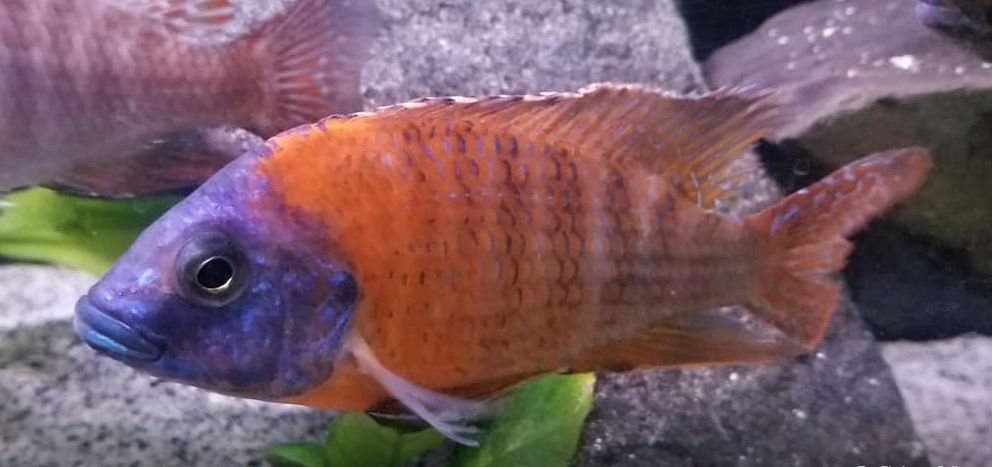
“Beneficial bacteria” (technically “nitrifying bacteria”) are only found in the top 50 microns (0.002 inches) of any biofilm. The reason for this has to do with the energy produced by oxidized ammonia to nitrate. This reaction is a very low energy reaction. Thus, each beneficial bacterial cell needs to contact and adsorb millions of ammonia molecules. This contact can only happen when there is a fast turbulent flow of water.
The beneficial bacterium thus can only grow where there is a good flow of water passing over the bacterium. As a result beneficial bacteria only grow on the surfaces of structures, not within the structures.
But if the biofilm is “grainy” and convoluted it has much more surface area than a thin flat biofilm (2x to 10x more), thus the ability of a biofilm to become significantly better when it becomes rough and old.
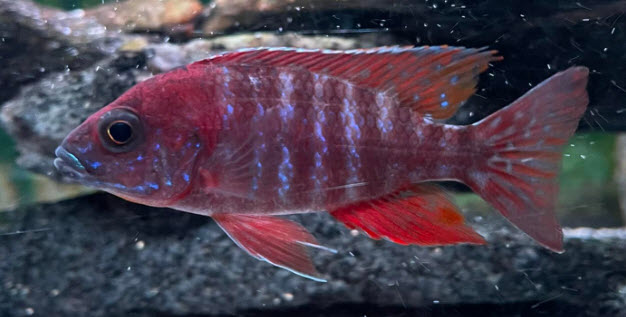
This can be best illustrated with a cross section of a single urethane foam cell roughly 0.030 inches across (30 ppi) in a typical aquarium filter over time:
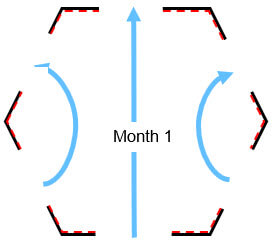
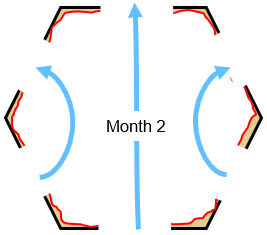
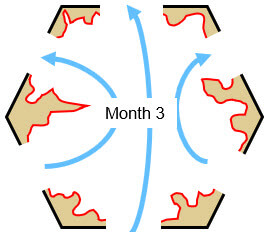


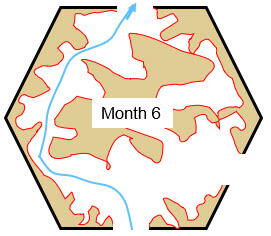

This illustrates how the bio-activity of the beneficial bacteria increases. The red lines (biofilm) are the ONLY areas where there is beneficial nitrifying bacterial activity. It is not the volume of the brown gunk but rather it is the surface area which is important. The brown gunk is at its optimum at month five. At 6 months the brown gunk gets enough volume to start shutting down the flow and stopping the biofiltration.
This six-month time period is typical of well filtered and heavily stocked aquariums and 30 pores per inch foam. If the amount of urethane decreases the time period will decrease. Small amounts of foam in small canisters on large aquariums can get clogged in two weeks. Very heavily filtered aquariums with large amounts of foam can have the foam never get clogged.
The brown gunk/biofilm complexes which form slowly will be significantly better at giving crystal clear, clean, healthy water than ones that form quickly.
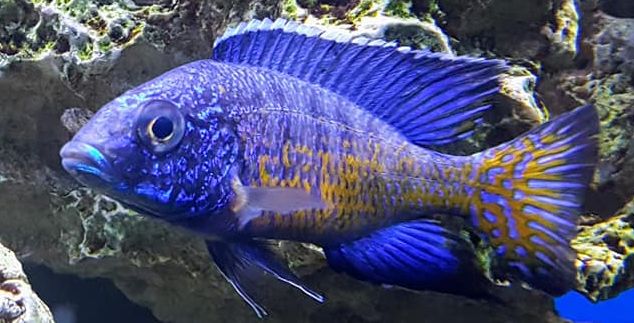
Not All Brown Gunk is Good
A rapidly formed brown gunk will have more heterotrophic bacteria and the fewer autotrophic nitrifying beneficial bacteria and the fewer beneficial microscopic organisms. So the faster a brown gunk forms the less desirable that brown gunk is. The slower the brown gunk/biofilm complex forms the better it will be at keeping the aquarium water crystal clear and bacteria free and the fish healthy. Also the faster a brown gunk forms the quicker it slows down flow and has to be cleaned.
Another factor is the strength of the brown gunk/biofilm. If the brown gunk/biofilm forms fast, like in two weeks, it will be very weak and easily broken up, destroying it’s good properties. A rapidly cycled sponge filter which is taken out of one tank and put in another will take days or even weeks to regain any ability to oxidize ammonia. The mere act of moving it destroyed the biofilm structure.
A brown gunk/biofilm which formed slowly, over a period of months, is much stronger. A sponge filter which has been operating for several months typically can be switched from one tank to another with little or no impact on its ability to oxidize ammonia.
The rate at which brown gunk forms is dependent on several factors:

The author keeps all his aquariums in the green area, WAY into the green area! Note that adding sugar to the mix during cycling is the same as using very low levels of protein in the food and will give a very weak brown gunk/biofilm structure.
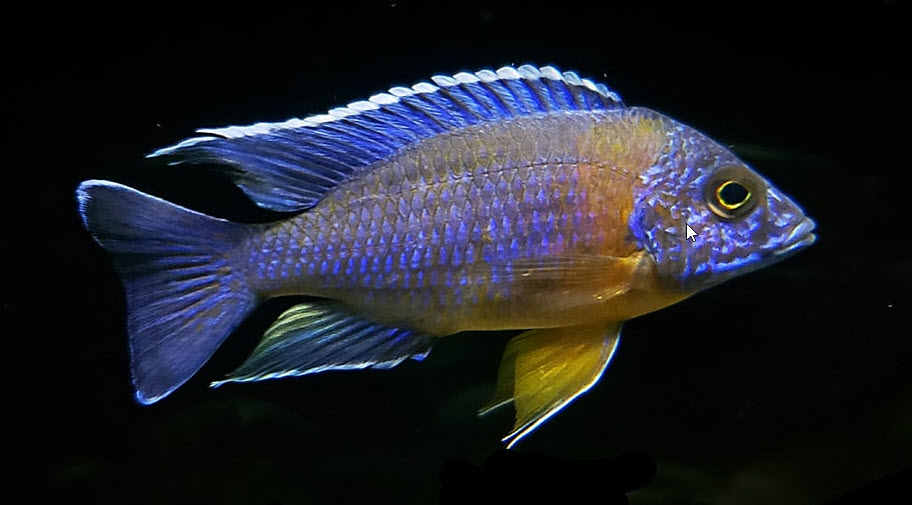
Cleaning the Brown gunk
Humans being humans most hobbyists clean their biomedia of all the brown gunk they can as soon as they realize some has built up in a filter. The entire concept of “cleanliness next to godliness” is so ingrained in our culture that anything “dirty” like brown “gunk” in the biomedia, must be bad and must be eliminated at all cost.
One well meaning but inaccurate commentator said:
“If the main biological media becomes dirty or covered with slime, biological activity is significantly reduced”.
Exactly the opposite is true. The “slime” they are talking about is a thick convoluted coarse layer of biofilm with a large surface area for beneficial bacteria to populate. This is exactly what you want in your biological filter.

From the Poret Foam Supplier (Swiss Tropicals):
“The brown filter sludge in a filter is for the most part alive and not simply waste. Removing this mud does more harm than good. The purpose of the filter media is not to filter out particles from the water as is often assumed. The media serves as the habitat for a vast array of microorganisms that include bacteria, archaea, worms, ciliates, flagellates, and many others. These microorganisms live in a community that is based on biofilms. The biofilms are created by bacteria that secret extracellular polymeric substance (EPS), which is often called “slime”. The community forms a bioreactor that processes the waste and turns it into food and energy for its members, and ultimately into organic or inorganic products that are then used by plants, evaporate, or removed by water changes. It takes a considerable amount of time to establish this “filter community”; consequently, it is very important not to disturb it unless absolutely necessary.”
This is one of the most intelligent writing any supplier of aquarium goods has produced. It is incredibly accurate in every facet it mentions. This quote is so important this is the fourth article I have put this quote into.
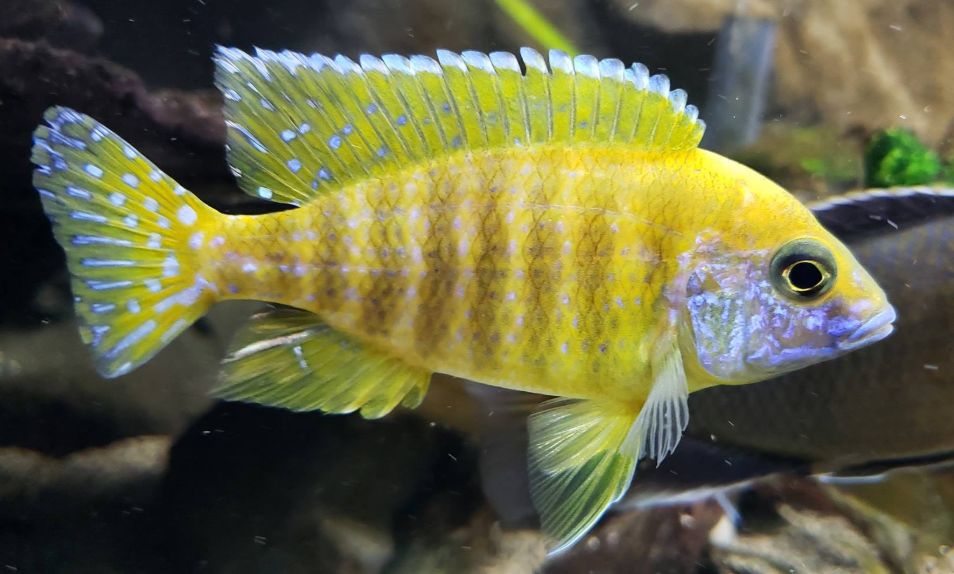
Researchers have found high flow aerated fluidized bed reactors and Kaldnes (K1) type media to be simply the best biofiltration possible. The reason for this is that K1 media will form brown adherent fuzzy films of jelly-like brown gunk on the walls of its interior. There is a high flow of well oxygenated water through the interior of these K1 media (like you see in the illustrations above) and a very good biofiltration by this “brown gunk” becomes inevitable.
Because of the constant knocking between each piece of K1 filter media as they swirl around in a fluidized bed, there never gets to be a situation where the brown gunk builds up to a point where it can stop the flow. The brown gunk always gets knocked off and disintegrated before it can get to that size. Thus, the maintenance free situation you find with K1 fluidized beds.

Brown Gunk Buildup and Food
There is an interesting relationship which occurs in aquariums. The amount of beneficial nitrifying bacteria, brown gunk and nitrate produced in a filter media is dependent on the ratio of carbon to nitrogen in the food. With higher carbon to nitrogen ratios there is less beneficial nitrifying bacteria produced, more nitrogen containing brown gunk produced (more “assimilatory denitrification”) and less nitrate in the water.
It is thus desirable to utilize a high protein food (a low carbon to nitrogen ratio food) and to remove the more nitrates produced with more water changes. Lot of brown gunk with little beneficial bacteria in it is NOT good for an aquarium. It clogs up the filtration and slow everything way down.
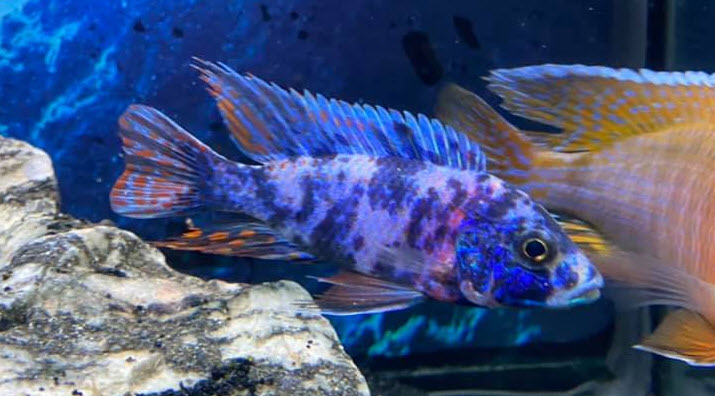
The effect is considerable. A food with 50% protein will have a carbon to nitrogen ratio of very roughly 5.4. A food with 35% protein will have a carbon to nitrogen ratio of very roughly 13.5, almost two and a half times greater ratio. The 35% protein food will have large amounts of brown gunk rapidly build up, low amounts of beneficial nitrifying bacteria, “dull” water and frequent ammonia spikes. The 50% protein food will have very little brown gunk buildup, a lot of beneficial nitrifying bacteria, crystal clear water, and no ammonia spikes. The 50% protein food will need 50% more water changes than the 35% protein food.
More about this relationship can be found in the following article:
3.9. Fish Food and Gunk
There are several ways one can get an undesirable high carbon to nitrogen ratio. One is to use a low protein food. Another method is to use “Stress Coat” with aloe vera gel (polysaccharides or polymerized sugars with NO nitrogen and lots of carbon). This is one reason we do NOT recommend stress coat products.

Too Much of a Good Thing
As in all things it is possible to build up brown gunk too fast in ANY filter, like in two to four weeks to flow slowing down. Overfeeding is generally the cause of the rapid buildup. One needs to stop feeding altogether for several weeks and only slowly ramp up the feeding to very light feeding. If the flow has slowed down, 80% to 90% of the brown gunk needs to be removed.
Adding leaves to create a “natural” aquarium will also produce a high carbon to nitrogen ratio and can produce a cesspool. I’ve had several readers try Father Fish’s addition of leaves and kill off whole tanks of fish. A teaspoon of decomposed brown leaves can work wonders for a tank, a cup of decomposing leaves can kill the fish.
In More Depth
For better understanding of the complex topic of brown gunk and biofilms click on these links:
6.8. Thorough Cleaning
6.2. Biofiltration
6.2.1. Detritus Explained
6.2.3. Cloudy Water
2.12. Beneficial Bacteria
.
Return to Filtration Menu
.
Aquarium Science Website
The chapters shown below or on the right side in maroon lead to close to 400 articles on all aspects of keeping a freshwater aquarium. These articles have NO links to profit making sites and are thus unbiased in their recommendations, unlike all the for-profit sites you will find with Google. Bookmark and browse!
.

Archie says
I have been adding dried mulberry leaves once every couple of months to two of my community tanks (55gallon and 40 breeder) for a year following the advice from Father Fish. My fish love them and would finish eating one whole leave in one day. I haven’t seen any ill effects though. But seeing that your Carbon-to-nitrogen ratio, I probably will just stop throwing leaves in there.
Sagi says
Ohhh, you can tell by the flow rate of the filter output. I was looking for that assumption.
Slime build up don’t reducing the flow rate, however actual dirt, mulm, detritus does.
I was just having output flow reduced, after some time of introducing bio-bact media cartridge to the filter, however after a several adjustments, light washing in tank water and most possibly the supposed time elapsed, i recently most certain it restored to normal flow.
Sagi says
“Lot of brown gunk with little beneficial bacteria in it is NOT good for an aquarium. It clogs up the filtration and slow everything way down.”
That is exactly the aim at squeezing the mechanical media in tank water regularly.
How one can tell if the gunk is holding beneficial bacteria within it?
I believe giving a a foam a few squeezing regularly only removes the the waste particles needed to be removed, without affecting the bacteria colonies. That is the same as vacuum the substrate.
Sagi says
So according to this article the filter mechanical media, that is the sponge/foam,
shouldn’t be cleaned in tank water whatsoever..
Dave says
Keven….. I’m going to guess you are adding FAR TOO MUCH FOOD. After doing an 80% cleaning, stop feeding altogether for several weeks than only slowly ramp up the feeding. Also make sure the food is more than 45% protein.
Kevin says
In addition to my below response, When I try to lift and inspect the sponge filter inside the tank, aside from it being full of brown gunk to every last bit of foam, It smells bad. Like rotting sewer smell. This is a 40ppi sponge filter that I have not cleaned for 6 weeks. Also the tank water starts to smell a little bit bad. My aeration is very good whole surface area of has turbulent flows as I have big airstone.
And when I tried to scoop 1 cup of water from tank it was yellowish/brownish in color. Like a weak tea in color. I saw some info before that these yellowish/brownish tint is due to excessive DOC in the water hence I am thinking my filter media being already full of brown gunk is no longer able to process the DOC in the water column anymore since it it maybe clogged.
However you mentioned that for newly cycling tanks, filter media should not be cleaned for at least 2 months but you also mentioned any brown gunk that formed too fast are bad gunk.
Kevin says
Hi Dave,
That’s my main problem. I am forming too much brown gunk FAST. Even the canister tubings that were once transparent in color seems to be now heavy brown in color. And the walls of my tank are being filled with white algae?. But it could be water mold as you said algae should be green.
Or it could be that I have heavy bioload in my 37gallon tank. As per my computation I only have 126 cubic inch of 30 ppi foam in my canister and plus those two 3-inch sponge filters inside the tank. Whilst my bioload is 9 mollies, 2 platys and 2 angel fish, 4 angel fish juvies, 6 juvenile corydoras and 3 german blue rams.
I already transferred some of those fish to another tank and planning to totally remove all fish for the meantime and let the 37 gallon tank clear the water of bacterial bloom.
As I am constantly getting 0 ammonia, nitrites and even nitrates I think my tank is already cycled but not yet matured in terms of clearing the bacterial bloom. Do you suppose it is fine for me to remove all fish and let the tank handle the cloudiness on its own without adding any food.
Thanks Dave.
Dave says
In reply to Kevin …. Clean your canister of roughly 80 to 90% of the brown gunk. Leave some brown gunk behind. Why are you forming so much brown gunk? STOP FEEDING SO MUCH!!!!!!
Kevin says
Hi Dave
Thank you for your valuable response. It is much highly appreciated as per my experience the advises of those people all over social media and online forums DO NOT WORK and they only survive having clear tanks due to repeated water changes and extensive cleaning and extensive chemical filtration which I believe your words that these are just bandages to a real problem.
One thing I need your help is you mentioned in your articles that brown gunk that forms fast in the filter within 2 weeks are bad gunks and should be cleaned.
And as I am just starting my cycling my canister filter foam got full of brown gunk in just 2 weeks while the other sponge filters(air operated) in 4 weeks. Should I clean my foam media in my canister filter or just let it be and wait for it to mature for 2 months ? even though the flow is slowed down now but not totally stopped.
Thanks Dave!
Dave says
In reply to Keven … You are overfeeding, exactly the opposite to what is recommended for a fish in cycle. Stop feeding for a week. Then feed at half strength every three days for two weeks. Continue to feed only what fish can consume in one minute once a day. Clean 80% of the brown gunk out of the filters. Cut WAY BACK on the food amount.
Kevin says
Hi Dave,
If I am doing a fish-in cycling and feeding with 47% protein food and slightly overfeeding with 3-5 pellets per fish (9 mollies, 2 plattys and 4 angel fish juveniles in a 37 gallon tank) and with a canister filter of pure 30ppi foam media and 2 medium sized (3 inches) sponge filters inside the tank with big airstone and lots of aeration.
and I noticed I am getting 0 ammonia, 0 nitrate DAILY and all the sponge filters and even canister filter foam media are now full with brown gunk and the walls of the tank glass and everywhere is being filled with brown and white gunks AFTER only 4 weeks of cycling..
DO I need to clean the foam media in my filters?
I am torn between your advice not to clean when starting to cycling tank if the water has not yet cleared between your advice in this article that not all brown gunks are good specially if it formed too fast. Water is still at 90% cloudiness (pure thick milky white).
Thanks for your insight.